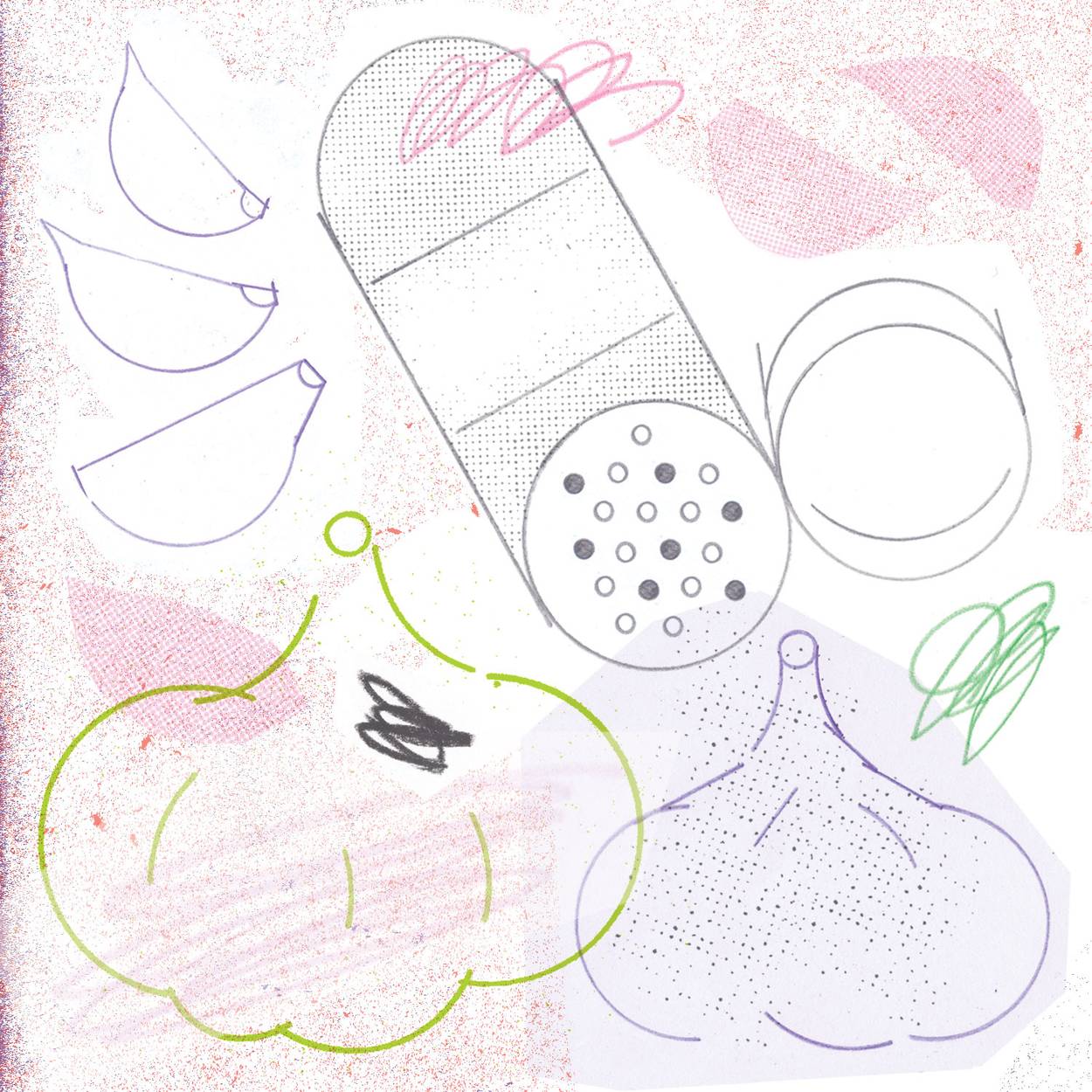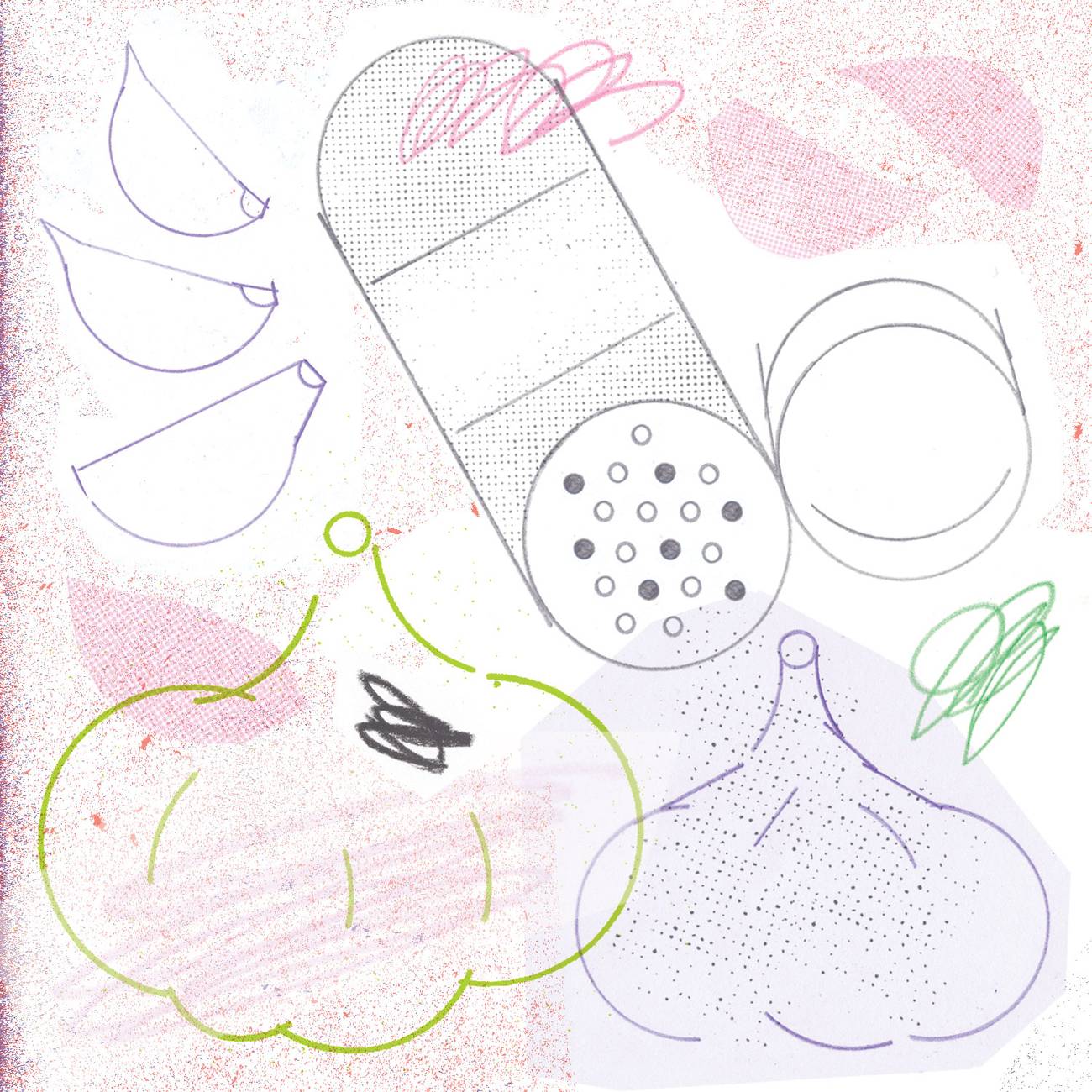The Joys of Garlic
It’s delicious, it’s good for you, and even the Talmud recommends adding it to your diet




Garlic and Jews go way back. In the Jerusalem Talmud, Ezra the Scribe recommended garlic as an aphrodisiac to be taken on Friday nights—when sexual relations traditionally took place. The Babylonian Talmud maintained that a Shabbat meal containing garlic would create a romantic atmosphere between husband and wife. It also claimed that garlic satiated the appetite, warmed the body, brightened one’s face, increased semen, and killed intestinal parasites. So it’s no surprise that Jews have historically eaten garlic during Sabbath meals.
Jews are not alone in their fondness for garlic. It has been used as a seasoning from the Middle East to China for thousands of years.
Garlic was highly prized by the ancient Egyptians: Whole garlic cloves were found in Tutankhamun’s tomb to provide food in the afterlife and to ward off evil spirits. Garlic was also given to the enslaved people who built the pyramids, to keep up their strength.
The ancients Greeks believed garlic was good for your health, increased energy, and lengthened your life. The Greek physician Galen, who was a follower of Hippocrates, called it a panacea, while Aristotle recommended garlic as a cure for rabies. The Romans, on the other hand, used garlic to treat gastrointestinal disorders, for seizures, and for snake bites. Pliny the Elder prescribed garlic for all kinds of maladies, from epilepsy to tuberculosis. He also suggested mixing garlic with oil to cure running ulcers.
In ancient times, Jews were said to be so fond of garlic that the Romans dubbed them “garlic eaters,” a term that stuck for centuries to come when garlic was often depicted in European caricatures of Jews. In the Middle Ages, Jews were said to have avoided the bubonic plague by hanging a clove of garlic around their necks. It should be noted that garlic-loving French priests, while visiting London in the 17th century, did not succumb to the plague, while garlic-hating English priests caught it easily. Claudia Roden wrote in The Book of Jewish Food that Jews in Istanbul also avoided the plague by hanging garlic bulbs on their doors. For centuries garlic was thought to be a protection against evil spirits. In the Middle Ages, garlands of garlic were strewn around cradles to ward off the evil eye and to protect babies from being stolen. Garlic was also hung on all windows and doors as a safeguard against vampires.
Garlic (Allium sativum) has been used in traditional folk medicine for centuries. The 16th-century physician Pietro Mattiolli of Siena recommended garlic to treat worms, digestive and kidney disorders, and for mothers during childbirth. In the U.S., the Shakers used garlic as an expectorant, tonic, and stimulant. During WWII, the Russian government recommended using garlic to treat its soldiers when the country ran out of antibiotics—so much so that garlic became known as “Russian penicillin.”
There are two main varieties of garlic: the soft neck garlic (Allium sativum), which has a soft, pliable stalk and papery skin; and hard neck garlic (Allium ophioscorodon), which has a strong, spicy flavor when chopped and eaten raw that becomes more mellow when cooked. Roasted garlic has a mild, nutty taste with a creamy texture. It is interesting to note that the flavor of garlic changes according to how it is handled. For example, finely grated or crushed garlic is much more pungent than sliced garlic. This is due to a compound in garlic called allicin. The more garlic is crushed or chopped, the more allicin is produced and the stronger the flavor.
Today garlic is widely used all over the world as a seasoning and condiment. Its pungent flavor and distinctive aroma give depth to salad dressings, vinaigrettes, sauces, vegetables, soups, and stews. When combined with butter or olive oil, it is used to make French garlic bread and Italian bruschetta all’aglio (garlic toasts). Aioli—the well-known French garlic mayonnaise—is often served with crudites or as a sauce for new potatoes.
In late spring or early summer, you may come across garlic scapes, the green curly tops of hard neck garlic, which have a mild flavor similar to scallions and are often used in egg dishes and stir-fries. Whole garlic bulbs are delicious roasted in a hot oven for 30 to 40 minutes until the cloves are golden and feel soft when pressed. After squeezing the cloves out of their skins, you can then eat them as they are, or they can be mashed and used as a spread for bread or toast. They are also very good mixed with sour cream and used as a topping for baked potatoes.
When choosing garlic, avoid soft or dry cloves or bulbs with green shoots—a sign that they have been too long on the shelf. Garlic bulbs should feel firm and not hollow. If they start to sprout, they are still edible; simply remove the sprout with a paring knife. If the head of garlic is unpeeled and whole, then store it in a cool, dimly lit place with good air circulation.
Current research suggests that garlic has many health benefits. It contains powerful antioxidants and sulphur compounds like allicin, which have anti-inflammatory properties that may reduce the risk of degenerative diseases like rheumatoid arthritis, Parkinson’s and Alzheimer’s, and cardiovascular disease. It is also believed that eating raw garlic twice a week may also help reduce the risk of lung cancer.
Paola Gavin is a food writer and author of four vegetarian cookbooks including Hazana: Jewish Vegetarian Cooking. Follow her on Instagram @paolagavin and on Twitter @paolagavinfood.